Butterfly FAQs
Butterflies and moths belong to a group of insects called Lepidoptera. Like all insects, butterflies and moths have a head, thorax, abdomen, two antennae, and six legs.
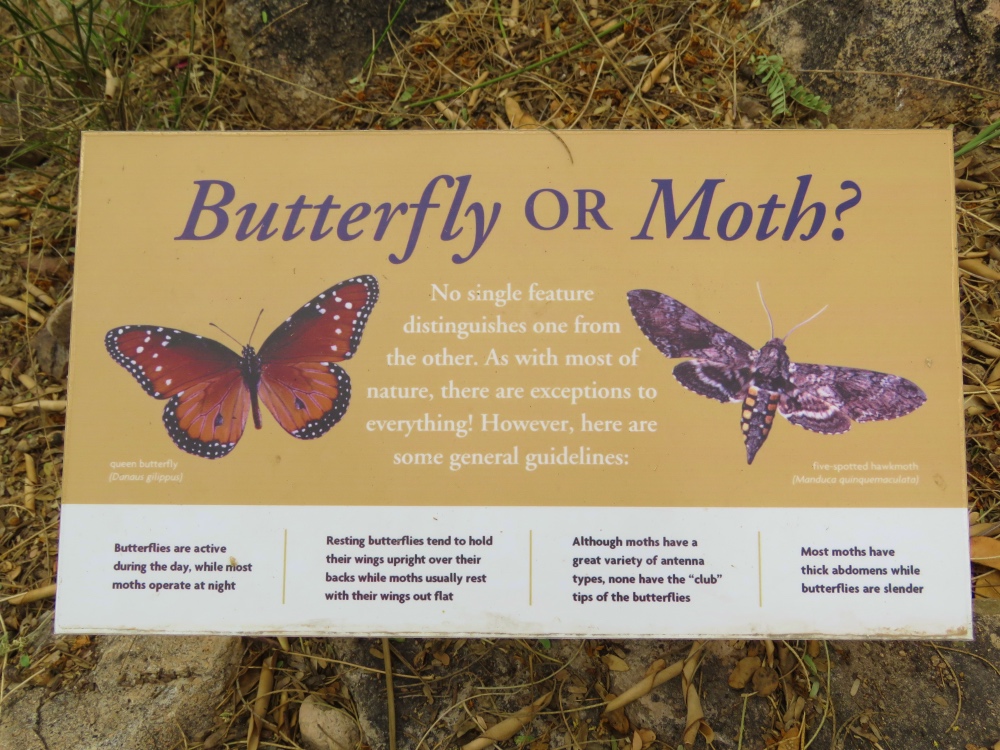 |
There are many more species of moths than butterflies. Butterflies and skippers make up about 10% of the Lepidoptera order, while moths make up 90%.
Moths and butterflies have four wings that are almost always covered by colored scales, and a coiled proboscis for drinking liquids such as flower nectar.
Here are some frequently asked questions (FAQs) about butterflies ...
What is the difference between a butterfly and a moth?
- Butterflies are active during the day, while moths tend to be noctural.
- Butterflies tend to fold their wings vertically up over their backs. Moths tend to hold their wings in a tent-like fashion that hides the abdomen.
- Butterflies are typically larger and have more colorful patterns on their wings. Moths are typically smaller with drab-colored wings.
- Some moths have wingless adults and some primitive moths lack a proboscis. Moths have a frenulum, which is a wing coupling device that ensures the wings travel together during flight. Butterflies do not have this.
- Moths build a cocoon wrapped in a silk covering. A butterfly makes a chrysalis, which is hard and smooth with no silk covering.
- The antennae of butterflies have a swelling at their end; moths have no such "club" and instead are more feathered. Moth antennae tend to be leaf or feather shaped (compare the two images below).
Butterfly (l) and moth (r) side-by-side comparison |
What is the butterfly thorax, and proboscis?
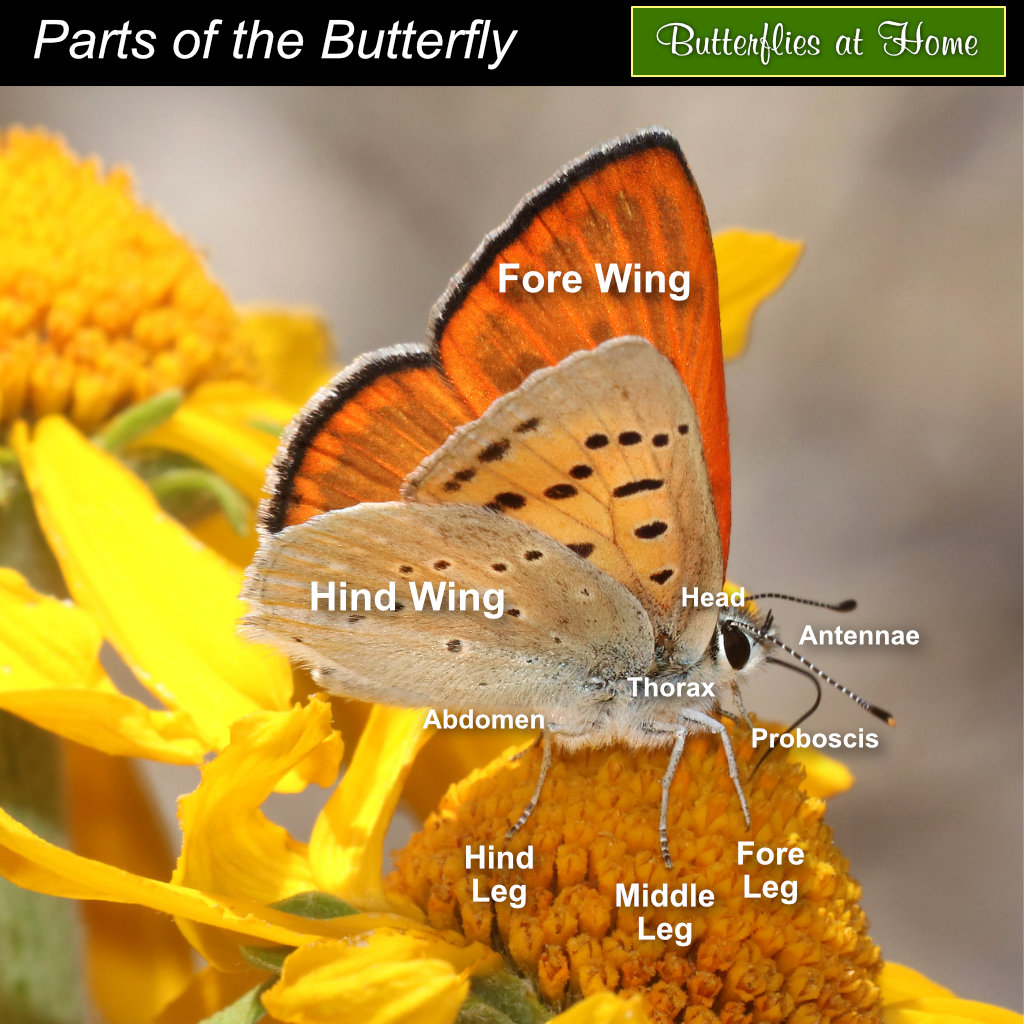 |
The butterfly is a complex entity, with these parts ...
- Head - Includes two clubbed antennae, two large eyes and a long proboscis
- Eyes - allow excellent sight of a large spectrum of colors
- Thorax - muscular area attaching the six legs and four wings
- Abdomen - behind the thorax, a long tubular area of eleven segments housing the digestive system
- Wings - Butterflies have four wings covered with scales, two on each side of the abdomen: the forewing (FW) and the hindwing (HW). The forewings are larger and longer. Hindwings are typically more rounded.
- Legs - six jointed legs with feet-like clawed tarsi ... they can taste with these "feet"
- Antennae - feature a club at the end and chemical receptors for smelling; also used for touching
- Proboscis - a tubular feature for drinking and sipping, like a straw. When not in use, it is rolled up under their head.
What is the life span of a butterfly?
Different butterfly species have different life spans, and actual survival rates depend on factors such as weather and predators. An average butterfly species has an adult life of 2-4 weeks, or less.
Some live much longer, like the Mourning Cloak, which may live almost a year, and hibernate during winter. The last generation of Monarchs each year lives through the winter at the end of their fall migration into Mexico, living a period of up to seven months.
What do butterflies eat?
Most adult butterflies drink nectar from flowers through their "tongues". A smaller number of butterflies never visit flowers, but gain sustenance from tree sap, rotting animal matter, and other organic material.
Butterfly caterpillars almost always eat plant matter.
Is the butterfly a pollinator?
Yes! While the best-known pollinators may be honeybees and bumblebees, butterflies do their part to help with the pollination of plants and flowers, and ultimately seed and food production.
Why are butterfly colors so important?
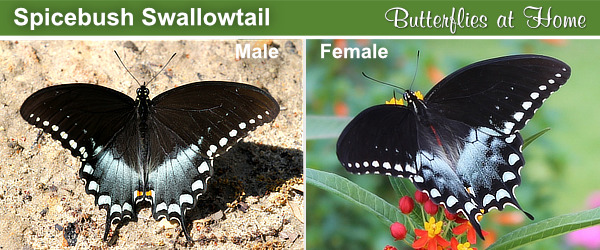 Color differences in the male and female Spicebush Swallowtail |
As day-flying insects, butterflies are often brightly colored, as are some day-flying moths, to communicate with each other. Night-flying insects typically have dull coloration because bright colors are unimportant at night when they can't be seen.
Another function of coloration is to help an insect find a potential mate; colors advertise the species and sex of an individual, like in the Spicebush Swallowtail (see images to the right). In species like the Monarch, colors may also communicate distastefulness to predators such as birds. Through the process of mimicry, some butterflies escape predators by resembling bad-tasting species.
We offer a series of pages to help identify butterflies by primary color ... is it yellow, white, brown, green, blue or ??
How many butterfly species are there in the world?
It is estimated that there are about 20,000 species of butterflies in the world. They are found in every continent except Antarctica. In North America, there are 725 species (north of Mexico), with about 575 of these occurring regularly in the lower 48 states of the United States.
Included on this website are some of the more common butterflies found in residential areas, nearby parks and gardens, and while hiking in open spaces. Here is a list of 150 common butterflies of North America and also a list of the Top 10 common backyard butterflies.
How does the butterfly go from an egg to an adult?
The butterfly life cycle consists of four stages:
- Egg - A butterfly starts life as a very small, round, oval or cylindrical egg laid on the leaf of a "host plant"
- Larva (caterpillar) - once the egg hatches, the larva eats the host plant on which it was placed. As the larva grows, they "molt" several times, becoming larger through each step, or "instar".
- Pupa (chrysalis) - as the larva reaches its full size, it transforms itself into a sack in which it will make the final transformation into an adult.
- Adult butterfly
Read more about the Butterfly Life Cycle
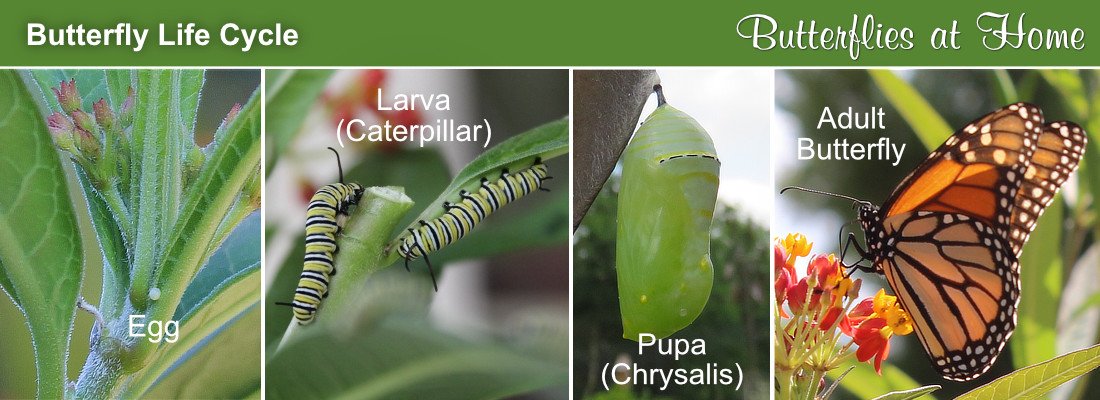 |
Do butterflies migrate?
Yes, some do, others do not. Monarch butterflies (Danaus plexippus) are known for their long-range 3,000 mile mass migration that brings millions of them north in the spring, and back to California and Mexico each winter.
The American Snout (Libytheana carinenta) is known to be migratory, and some years the migrations are so massive as to darken the sky. It migrates around Central and South Texas following late summer rains, seeking fresh growth on Hackberry trees.
More species also migrate, such as the Cloudless Sulphur, Gulf Fritillary, Painted Lady, American Lady, Red Admiral, Common Buckeye, and others.
What do butterfly caterpillars look like?
Butterfly caterpillars come in all shapes and colors! Some are green, some are black. Some have stripes, others have spikes and horns. They might be fuzzy, or smooth. We have written an article showcasing some of the common caterpillars you may see in your home gardens ... Learn more about butterfly caterpillars
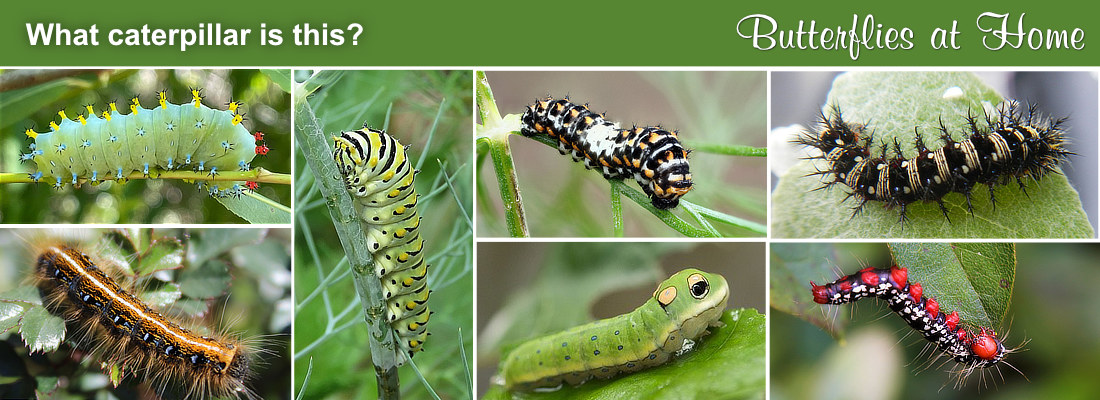 |
Do butterflies like cold or hot weather?
They love warm weather! They cannot fly if their body temperature is below about 85 degrees. And butterflies typically need an air temperature of 55-60°F to be able to fly.
I see small hummingbirds on my flowers. What are they?
You may be seeing what are commonly called "Hummingbird Moths" which hover like actual hummingbirds. There are number of species of hummingbird moths, like those shown below. Read more about Hummingbird Moths
 |
What is the difference between dorsal and ventral views?
When studying about butterflies, and reading books about them, you will often see references to "dorsal view" (wings open) and "ventral" view (wings closed). See example photos below.
Painted Lady (dorsal view)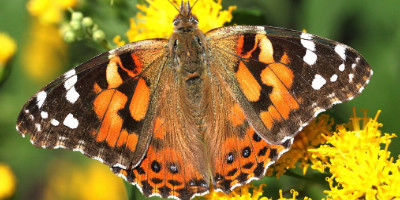 |
Painted Lady (ventral view)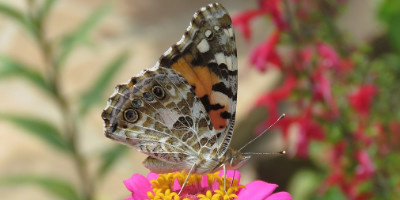 |
How are butterflies and moths classified by scientists?
Butterflies and moths with the same or similar characteristics are classified by scientists into groups called "families". As an example, most of the largest butterflies in the world, many with tail-like projections on the hindwings, are placed together in the Swallowtail family, scientific name Papilionidae.
- Papilionidae - Swallowtail butterflies, most species having prominent tails.
- Hesperiidae - Skippers - relatively small, fast-flying species.
- Lycaenidae - Blues, Hairstreaks and Coppers. Colors and patterns of sexes often differ.
- Nymphalidae - Brush-footed butterflies, contains many subfamilies.
- Pieridae - Yellows and Whites, with those predominant colors.
- Riodinidae - Metalmarks, sometimes placed in the Family Lycaenidae.
How do butterflies protect themselves in bad weather?
Butterflies shelter under leaves during rain or stormy weather, and at night.
Which country has the most butterfly species?
Peru in South America has more butterfy species than any other country ... about 3,700!
 |
|||
Check out these popular butterfly items at our Amazon Store |
|||
| Kaufman Field Guide to Butterflies of North America 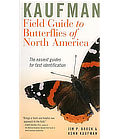 |
The Life Cycles of Butterflies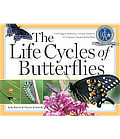 |
Peterson First Guide to Butterflies and Moths of North America 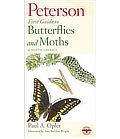 |
|
Outdoor Butterfly Hanging Flag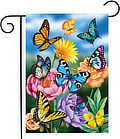 |
Butterfly Habitat Cage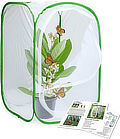 |
Butterfly Sterling Silver Pendant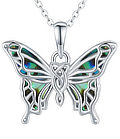 |
|
|
|||
